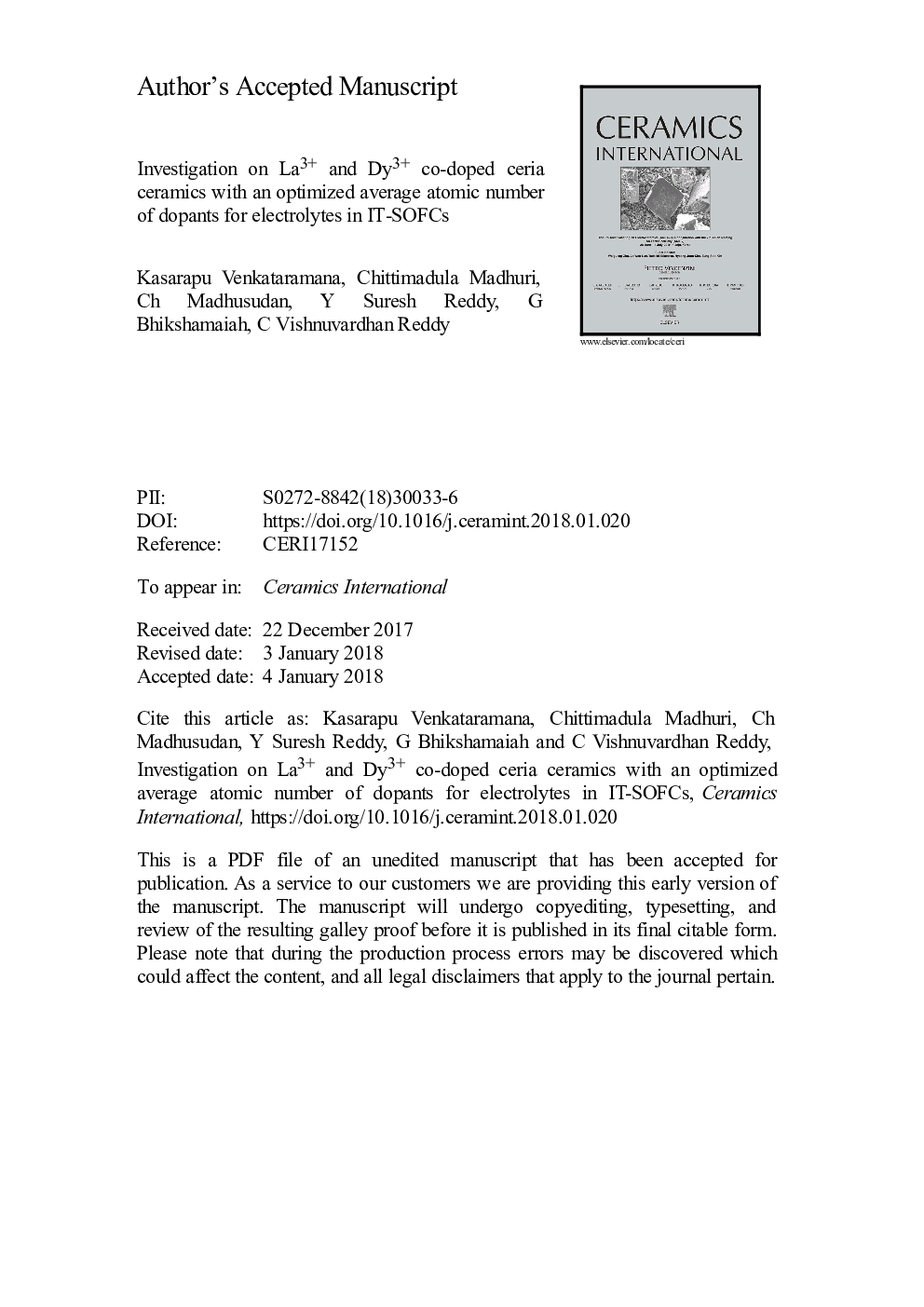| Article ID | Journal | Published Year | Pages | File Type |
|---|---|---|---|---|
| 7887754 | Ceramics International | 2018 | 35 Pages |
Abstract
In the present study, we investigate the fundamental properties of CeO2 by selecting La3+ (57), and Dy3+ (66) as dopants with optimized average atomic number of 61.5, which lies in between Pm3+ (62) and Sm3+ (62) in accordance with the criteria for optimum doping. A system of co-doped ceria ceramics Ce1-x-yLaxDyyO2-δ ((x, y) = (0.00, 0.00), (0.025, 0.025), (0.05, 0.05), (0.075, 0.075), (0.10, 0.10), (0.00, 0.20) and (0.20, 0.00)) as electrolytes for intermediate temperature solid oxide fuel cells were successfully prepared by a well-known sol-gel auto-combustion route. In order to obtain dense samples, the prepared pellets were sintered in air at 1300 °C for 4 h using conventional furnace and relative densities of all the samples were found to be higher than 95%. Single phase cubic structure, microstructural density and elemental composition analysis of all the samples were studied by powder X-ray diffraction, scanning electron microscope and energy dispersive spectroscopy techniques, respectively. Raman spectroscopy analysis confirmed the formation of concentrated O2--vacancies in the co-doped ceria system. Impedance spectroscopy measurements revealed the high value of total ionic conductivity and low activation energy for the composition Ce0.85La0.075Dy0.075O2âδ i.e., 2.08 à 10-2 S cm-1 and 0.58 eV, respectively. Linear thermal expansion analyses of all the samples revealed the matched thermal expansion coefficients. Finally, these results recommend that the Ce0.85La0.075Dy0.075O2âδ sample can be useful as a solid electrolyte in IT-SOFC applications.
Related Topics
Physical Sciences and Engineering
Materials Science
Ceramics and Composites
Authors
Kasarapu Venkataramana, Chittimadula Madhuri, Ch Madhusudan, Y.Suresh Reddy, G. Bhikshamaiah, C.Vishnuvardhan Reddy,
